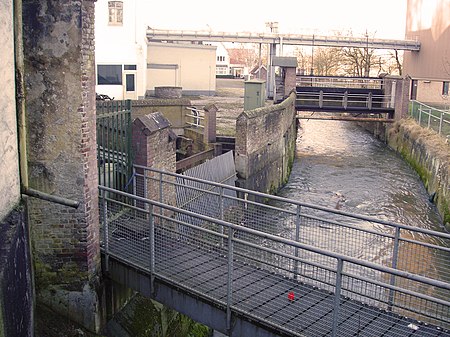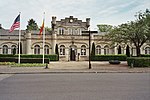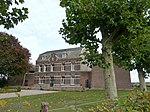Kruitmolen
Rijksmonuments in Valkenburg aan de GeulWatermills in Limburg (Netherlands)Watermills in the Netherlands

The Kruitmolen (English: Powder mill, Limburgish: Polfermeule) is a watermill located on the Plenkertstraat 82 in Valkenburg aan de Geul, Netherlands. Build in 1820 along the Geul river, the watermill functioned as powder mill until 1851 and temporarily became a paper mill between 1875 and 1884. Since 1887 it is part of a brewery where it currently still forms a part of the electrical supply system. The mill is a rijksmonument since January 24, 1984 and is part of the Top 100 Dutch heritage sites.
Excerpt from the Wikipedia article Kruitmolen (License: CC BY-SA 3.0, Authors, Images).Kruitmolen
De Leeuwhof, Valkenburg aan de Geul
Geographical coordinates (GPS) Address Nearby Places Show on map
Geographical coordinates (GPS)
| Latitude | Longitude |
|---|---|
| N 50.8659 ° | E 5.8226 ° |
Address
De Leeuwhof 7
6301 KZ Valkenburg aan de Geul
Limburg, Netherlands
Open on Google Maps








